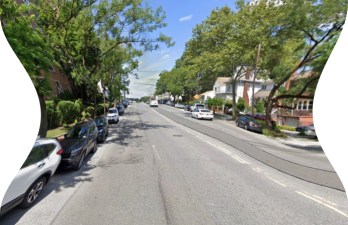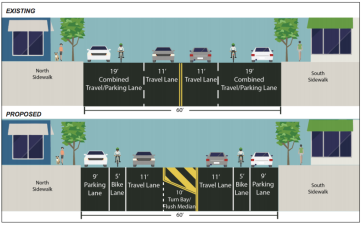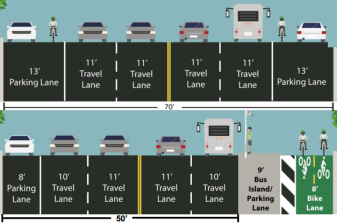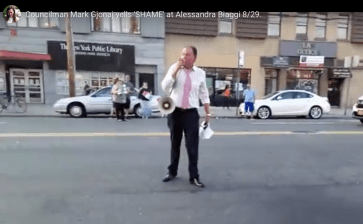Bronx Pol Loses Fight Against Street Safety as DOT Moves Ahead on Riverdale Ave.

Games over.
The Department of Transportation has dismissed complaints of a Bronx Council member and will move ahead with its life-saving plan to narrow Riverdale Avenue from a four-lane speedway into a slower residential street [PDF].

“This project will deliver designs that have proven to reduce speeding, calm traffic, and slow turning drivers on a street where there has been multiple fatalities in recent years,” agency spokesman Vin Barone told Streetsblog, referring to three fatalities on the stretch between W. 254th and W. 263rd streets since 2015. “We look forward to improving safety for all road users on Riverdale Avenue while creating an important new connection for the borough’s bike network.”
The agency will begin implementing the changes in late summer.
The news was broken by a frustrated and disappointed Council Member Eric Dinowitz, who says he does not oppose the so-called “road diet,” but merely the “undemocratic” process by which, he claims, the DOT came up with it.
“I have been deeply troubled throughout this process due to the constant misrepresentation of facts and the lack of responsiveness to the community,” he said in a mass mailing to his constituents this week, linking to his full statement, that charged that the DOT was moving ahead despite an “utter lack of input from community stakeholders and [DOT’s] dishonesty with the community.”
The DOT did present the plan to the Bronx Community Board 8 Transportation Committee in March. At the time, Dinowitz was already calling the agency “undemocratic,” Streetsblog reported. The agency said it had received requests from Riverdale Main Streets Alliance and state Sen. Alessandra Biaggi for safety improvements on Riverdale Avenue. In the end, the panel rejected the DOT proposal in a contentious 3-2 vote.

The plan is a fairly basic DOT “road diet,” taking a four-lane roadway and converting it into a two-lane roadway with a center turning strip. The agency says the work is essential because crashes injured 66 people between 2015 and 2019, 26 of them pedestrians. Two senior pedestrians and one motorist were killed along the stretch during those five years. In all, there were 269 reported crashes during those five years on just that 10-block stretch or more than 53 per year on average. (In 2019 and 2020, there were a total of 86 reported crashes, injuring one cyclist, seven pedestrians and 14 motorists in those 10 blocks.)
The DOT also cited additional safety concerns:
- 55 percent of pedestrian crashes occurred while a pedestrian was crossing with the light.
- 58 percent of pedestrian crashes occurred while a driver was making a left turn
- 34 percent of injuries were caused by rear-end collisions — and indication that drivers are speeding, thanks to the relatively low traffic volumes on the roadway.
Speeding is especially concerning, the agency said, because of frequent double-parking on the stretch. And a shared thru-lane causes vehicle conflicts because some drivers in the left lane are turning, while others want to keep going straight.
The agency consistently touts its safety record in road diets: On Macombs Road in the Bronx, the KSI rate dropped 44 percent after the road diet was built. On Gerritsen Avenue — where several people had died before the city finally acted — it dropped 40 percent.
We reached out to Council Member Dinowitz and will update this story if we hear back.




